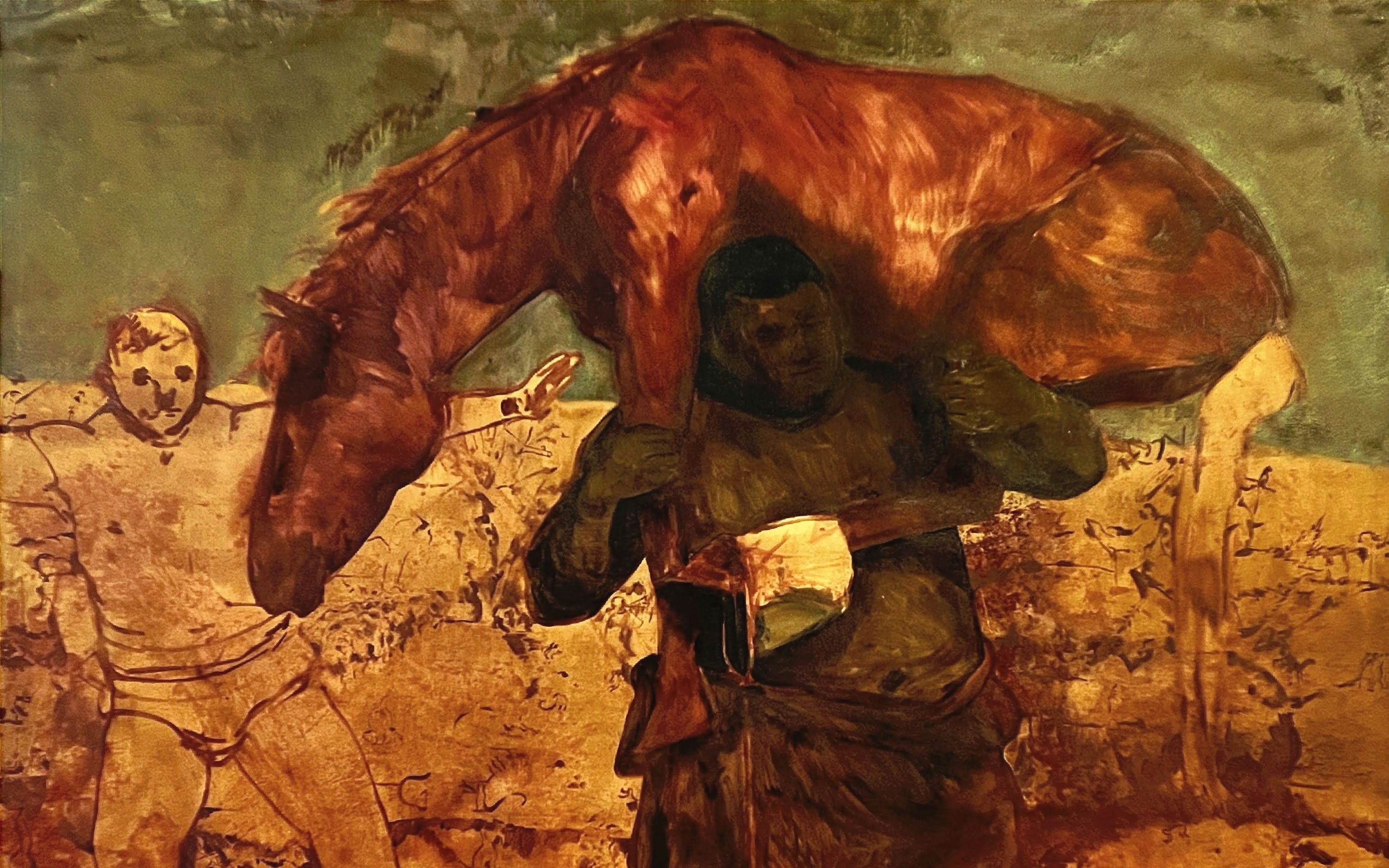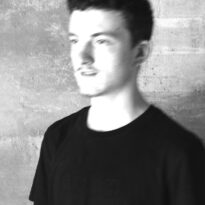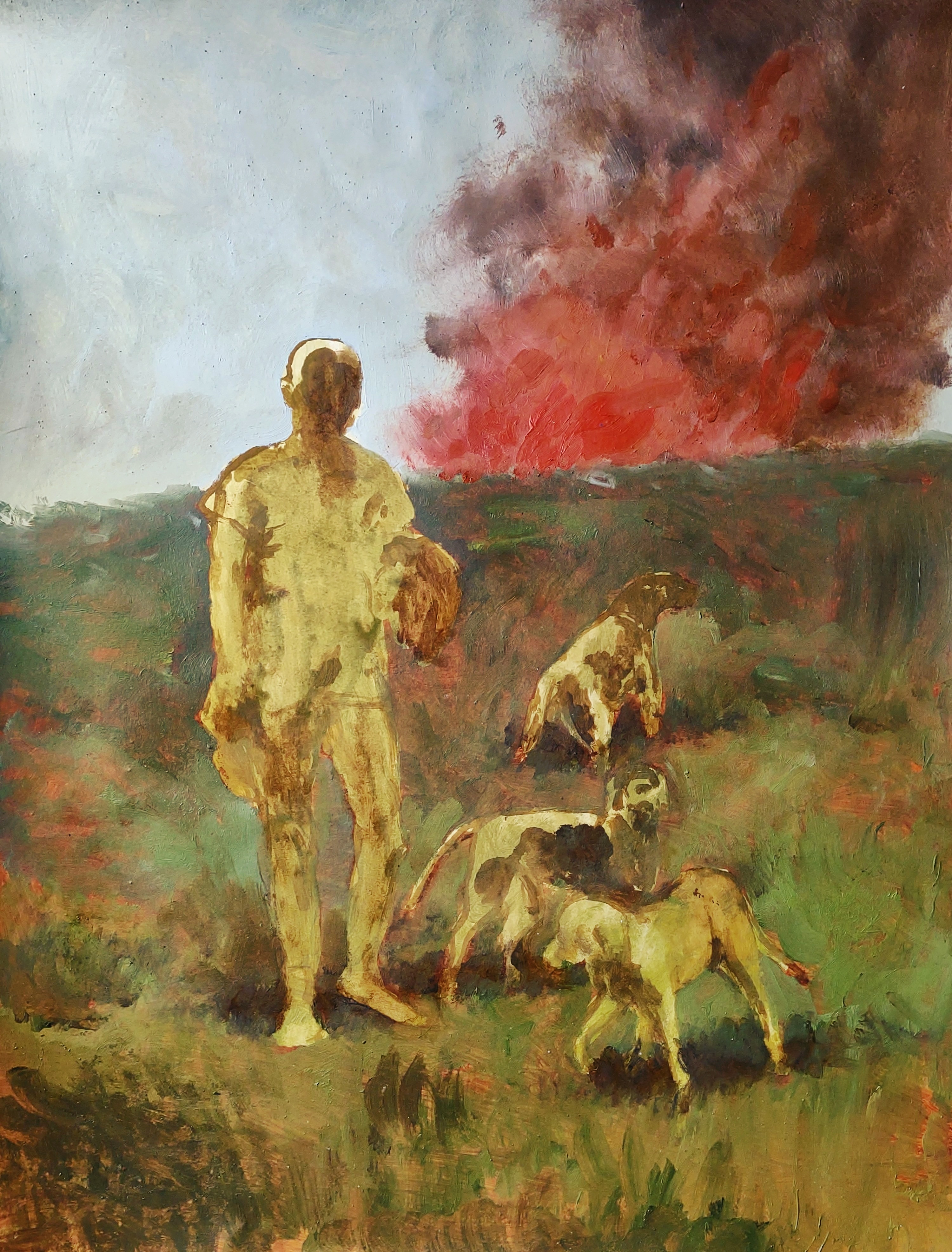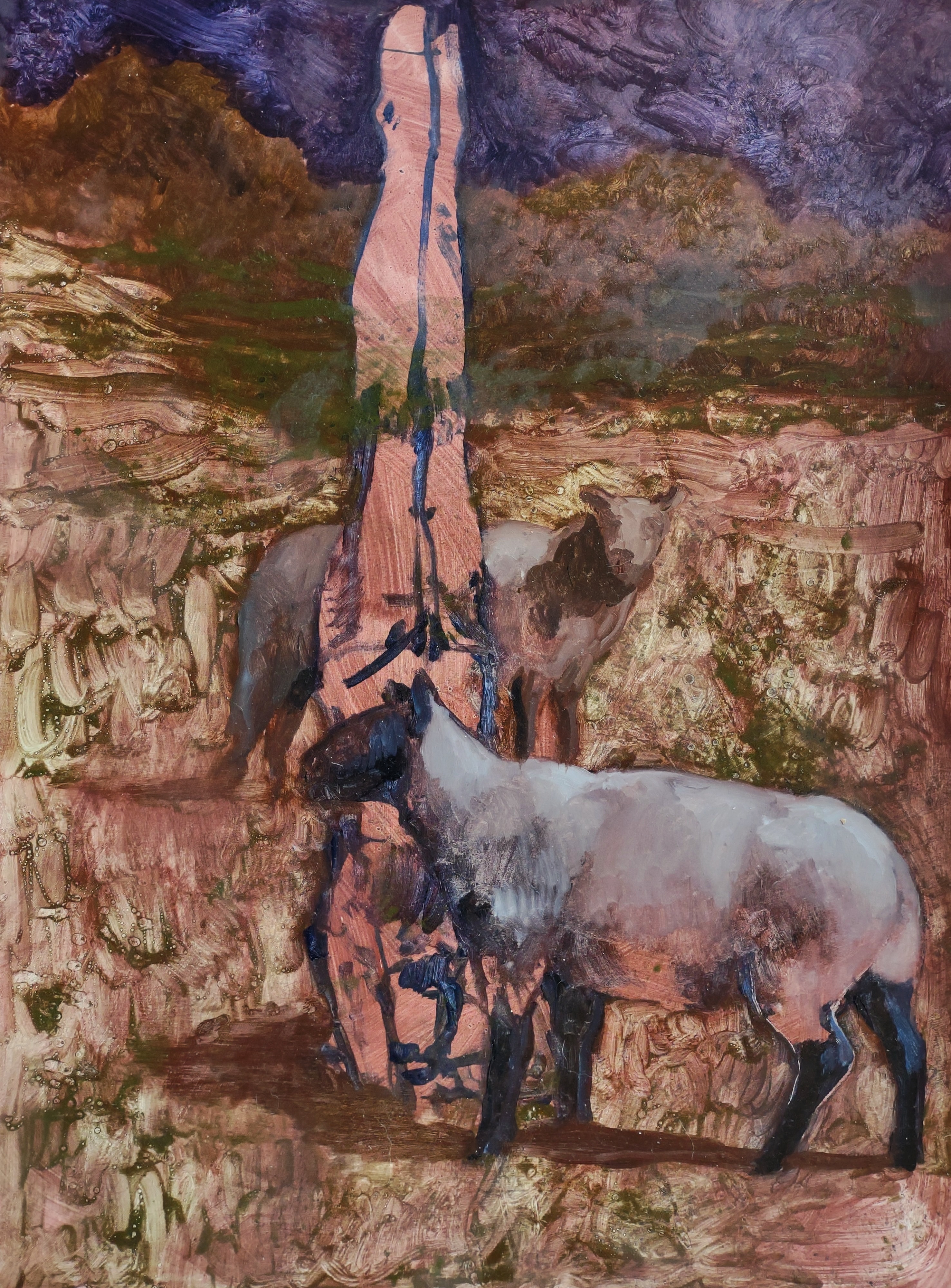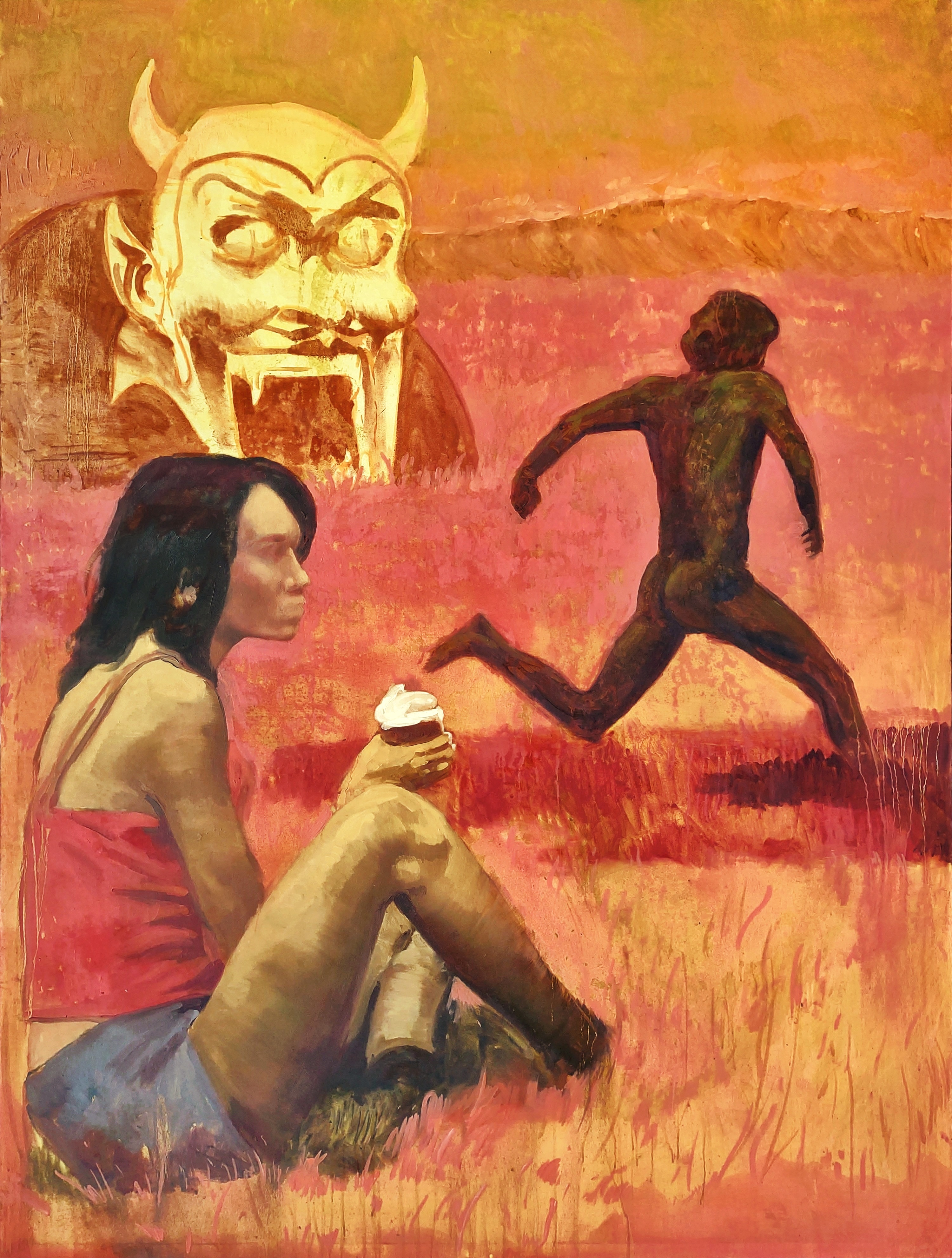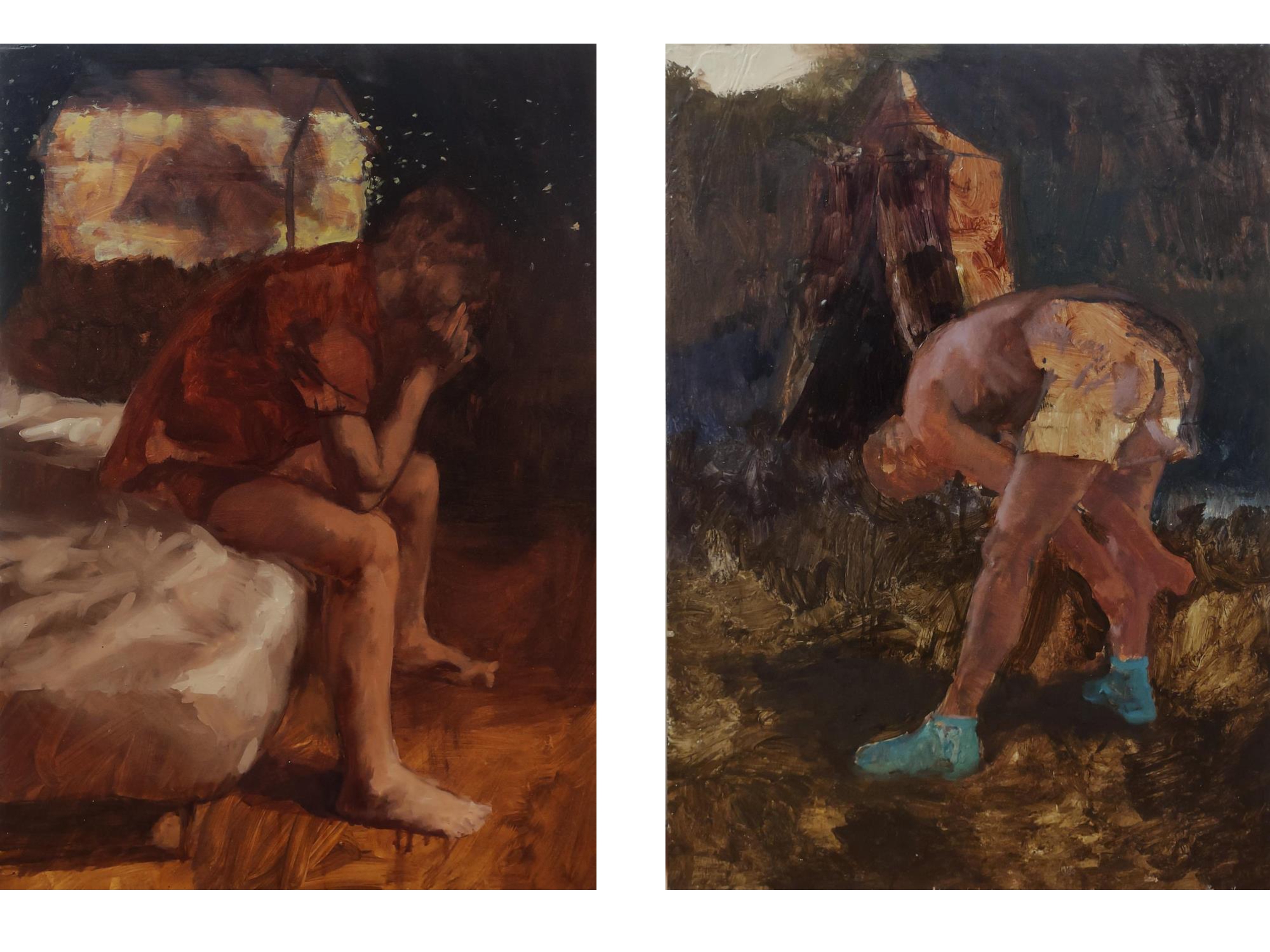How and why did you start your artistic career?
It all started in the simplest way possible: from a young age I loved to draw and tell something with pictures. Now I try to do the same, only with a more mature and conscious towards my work and what I want to communicate.
How did you discover your medium and why did you choose it?
I began using oil painting upon my arrival at the academy. Unlike the other techniques oil is a living, full-bodied material that can be used in a variety of ways. A technique I had never used before allowed me to question all the certainties I had built up to that point and to start anew. This thus allowed me to evolve my approach to painting, seeing its communicative potential, always offering me new insights to mature in my artistic journey.
Can you talk about your creative process? How does your work come about? How long does it take? When do you know it is finished?
In most cases I begin the drafting of ideas by constructing digital collages of images from magazines, photos from the Internet or personal ones. What I try to do is to create a dystopian narrative that involves all the figures and the space around them. To construct a visual code that attempts to rework the world in a personal key, always hinting at the presence of a note out-of-tune background, whether dramatic or ironic. The image, however, really takes shape during execution: a set of choices that find balance in moments of control, interspersed with moments of randomness. The continuous layering of color, shapes, and volumes can sometimes lead to upheavals in decisions and in what I want to get out of the image. The painting process can last from an hour as well as a week and reveals the potential of an image that from collages cannot can happen; therefore, a finished work may not match the original idea. In a very pragmatic toward the final stages I try to see if the image works and contribute the final details.
Who are your favorite artists? Which ones are you inspired by?
Velazquez for his technique and skill in natural representation. Gerhard Richter for his continuous pictorial research and extreme awareness in his work. Peter Doig for the characterization of his characters and the space in which they are immersed. Of course there are many others, but from each one I have tried to synthesize what I look at and study in all the artists who in some way they affect me. Not only in the world of painting, but also in film, literature or in comics, for example: Satoshi Kon, Italo Calvino, the Coen brothers, Taiyo Matsumoto, the transpositions of R.Dahl’s stories by Wes Anderson, etc. In them, very often, I find narrative elements interesting.


